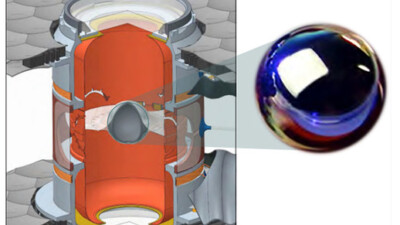A primer for engineers on simulating mechanical phenomena in 3D printing.
While most accounts of simulation for additive manufacturing (AM) focus on the complex interplay between thermo-mechanical phenomena that occur in 3D printing, conceptually separating the thermal and mechanical forces involved can be illuminating.
Why use mechanical simulation in additive manufacturing?
In this context, mechanical simulations can be understood to be more focused on the performance of 3D printed parts, while thermal simulations are more about the AM process itself. In this respect, mechanical simulations for additive parts are not unlike mechanical simulations for parts produced using more conventional processes, such as milling, forging or casting.
However, 3D printed parts are nevertheless unique in the types of stress or strains they can experience. Impeller blades, for example, can be subject to distortions which vary over the length of the blades due to variations in stiffness and their angles relative to the build plate. More generally, lowering the infill density for lightweighting can compromise structural integrity while part consolidation can introduce new areas of stress.
Examples like these show why it’s crucial for engineers to understand the mechanics of AM designs so they can judge which features will have the greatest impact on the stress behavior of specific regions on a part.
How is mechanical simulation relevant to additive manufacturing?
In the context of metal additive manufacturing, which includes laser powder bed fusion (L-PBF) and directed energy deposition (DED), modeling techniques are generally categorized on the basis of length scales: microscopic, mesoscopic and macroscopic (which is also referred to as the part scale). This is because metal AM involves complex, multi-physics interactions, with different phenomena occurring at different speeds and resolutions.
For this reason, while multiscale modeling is understood as the ideal approach to simulating metal AM, unfortunately, it’s also the most computationally demanding. Finite element analysis (FEA) is an alternative computational technique commonly used in mechanical simulations. One of the key methods within FEA is the finite element method (FEM) which, in this context, focuses on particular scales. For example, analyzing residual stresses and mechanical deformations occurs at the part-scale.
A finite element analysis (FEA) using FEM to simulate the material and mechanical constraints of a design falls into one of three broad categories:
- Static Analysis focuses on deformations resulting from stresses and strains
- Dynamic Analysis adds noise, vibration and harshness (NVH) into the mix
- Multibody Dynamics analyze complex assemblies with moving parts
In terms of the specific kinds of mechanical simulations applied to additive manufacturing, these include structural analysis (linear statics, fatigue and nonlinear analysis), structural dynamics (dynamic loads and NVH), acoustic simulation (which is what it sounds like), durability and fatigue analysis (for loading conditions and fatigue life prediction) and motion simulation (multibody dynamics).
Ideally, engineers can use mechanical simulations to predict part distortions and then “pre-deform” a part’s geometry so that it will attain the desired net shape once complete. This can be done statically, using a single value, or iteratively over multiple simulations, depending on the capabilities of the simulation software package being used.
The procedure for validating mechanical AM simulations depends on the materials and processes involved. For example, in the context of metal AM, distortion measurements for DED are usually limited to the substrate or build plate due to the process’ lower level of precision in deposition, while L-PBF – being both more accurate and more precise – can be validated by measuring distortions on the parts themselves.



